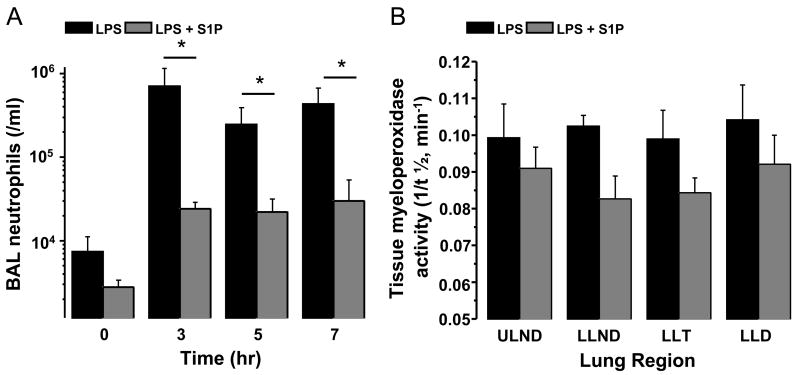Figure 2. Intravenous S1P administered subsequent to injury attenuates BAL neutrophil accumulation in a canine model of intrabronchial LPS-induced lung injury without significant effect on regional tissue myeloperoxidase (MPO) activity.
Panel A depicts the time-dependent accumulation of neutrophils in the BAL fluid of anesthetized beagles subject to high tidal volume mechanical ventilation after intrabronchial administration of bacterial LPS (2–4 mg/kg, black bars, n=6) or intrabronchial LPS plus intravenous S1P one hour later (85 μg/kg, gray bars, n=6). Beagles receiving S1P demonstrated significant reductions in BAL neutrophil accumulation after LPS instillation compared to those receiving LPS alone. Panel B depicts regional lung tissue MPO activity in beagles subject to eight hours of high tidal volume mechanical ventilation after intrabronchial administration of bacterial LPS (2–4 mg/kg, black bars, n=3) or intrabronchial LPS plus intravenous S1P one hour later (85 μg/kg, gray bars, n=6). S1P reduced lung tissue MPO activity (i.e. prolonged t½) by an average of 18% (p=0.1). Mean ± SEM, *p≤0.05 LPS compared to LPS+S1P.

